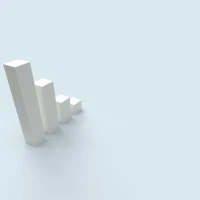The world of modern mathematics is a constantly evolving landscape, home to a myriad of concepts that underpin not only theoretical advancements but also practical applications across numerous domains. Among these, cycle graph theory emerges as a profound and versatile area that resonates through various mathematical facets. As we delve into the depths of cycle graphs, their potential unfolds in ways that are both intricate and profound, revealing a plethora of opportunities for innovation and problem-solving in modern mathematics.
Cycle graph theory stands as a testament to the beauty and complexity of mathematical structures. It is a concept that interacts seamlessly with other mathematical theories, fostering an understanding that is as essential as it is expansive. In this extensive exploration, we will unlock the hidden possibilities of cycle graphs, providing a comprehensive guide that not only illuminates academic discourse but also serves as a beacon for those eager to apply mathematical principles to real-world scenarios.
Understanding the Foundations of Cycle Graphs
Before we venture further into understanding the application of cycle graphs in modern mathematics, it’s imperative to grasp the fundamental aspects of these entities. A cycle graph, in its purest form, is a graph that comprises a single cycle – a series of vertices connected in a closed loop, with each vertex connected to exactly two edges beautiful genuine model.
What is a Cycle Graph?
A cycle graph, often denoted as Cn (where n represents the number of vertices), is a pivotal structure in graph theory. These graphs are characterized by the following features:
- Each vertex is connected by exactly two edges, no more, no less.
- The graph forms a singular closed loop, void of any intersections or branches.
- Cycle graphs are simple, undirected graphs – they do not accommodate loops or multiple edges between the same pair of vertices.
The Mathematical Significance of Cycle Graphs
Cycle graphs are not just abstract concepts; they bear significant implications in various mathematical areas, including:
- Topology, where they can represent the basic building blocks of more complex shapes.
- Combinatorics, where they impact the counting of different paths and cycles.
- Algebraic graph theory, where cycle graphs play a role in understanding graph eigenvalues and eigenvectors.
- Network theory, where cycles represent continuous routes in a network without retracing the same path.
Cycle Graphs in Combinatorics and Network Theory
Delving into the applications, one finds that cycle graphs are profoundly utilized in combinatorics and network theory, demonstrating their broad potential in analytical assessments and real-world problem-solving.
Combinatorics and Cycle Graphs
In combinatorics, cycle graphs are instrumental in calculating permutations and combinations. Since each cycle in a graph represents a possible sequence or arrangement, understanding cycle graphs is central to enumerating these sequences.
- They aid in the exploration of Hamiltonian cycles, crucial for solving the travelling salesman problem.
- They are employed to determine the number of different ways to arrange objects in a circle, which is pivotal in round-table meeting scenarios and similar setups.
Network Theory and Cycle Graphs
Network theory’s utilization of cycle graphs can be observed in:
- Circuit design, where electrical networks use cycle graphs to depict closed circuits ensuring a functional flow of current.
- Transportation networks, with cycle graphs simplifying the complexity of possible routes.
- Telecommunications, where network robustness and signal routing often depend on closed-loop pathways.
Advanced Applications and Theoretical Implications
As we delve into more theoretical and advanced applications, cycle graphs reveal complex interactions and behaviors that hold significance across several advanced fields of mathematics.
Cycle Graphs in Algebraic Graph Theory
Here are just a few ways cycle graphs inform algebraic graph theory:
- Spectral graph theory: Cycle graphs contribute to understanding the spectral properties of graphs, with their eigenvalues and eigenvectors playing a vital role in graph classifications and properties.
- Polynomial invariants: Graphs render insights into polynomial invariants like the characteristic polynomial, which are essential in determining graph isomorphisms.
Cycle Graphs in Topology
Cycle graphs are equally important in topology where they:
- Represent simple closed curves on surfaces, essential in the study of surface properties.
- Assist in visualizing transformations and mappings, such as those found in homotopy theory.
Comparative Analysis: Cycle Graphs vs Other Graph Types
When contrasting cycle graphs with other types of graphs, one finds distinguishing characteristics that underscore their uniqueness and utility in mathematical computations.
Cycle Graphs and Tree Graphs: A Contrast
| Feature | Cycle Graphs | Tree Graphs |
|---|---|---|
| Structure | A single cycle with no branches or intersections. | A connected acyclic graph with a branching hierarchy. |
| Edges | A cycle graph with n vertices has exactly n edges. | A tree graph with n vertices has exactly n-1 edges. |
| Path Connections | Each vertex connects to two other vertices, forming a closed loop. | Each vertex (except the root) connects to exactly one parent vertex. |
Cycle Graphs Versus Complete Graphs
Complete graphs, denoted Kn, are graphs where each vertex is connected to every other vertex. Unlike cycle graphs, which are simplistic and uniform, complete graphs are intricately interconnected, rendering them much more complex when analyzing paths and relationships.
Cycle Graph Theory: Real-World Applications and Future Innovations
The potential of cycle graph theory spreads far beyond theoretical curiosities, extending its influence into practical applications that affect everyday life and forthcoming technological advances.
Technological Innovations Utilizing Cycle Graph Theory
- Quantum computing: Cycle graphs represent quantum states and transitions, facilitating the design of quantum algorithms.
- Cryptography: Secure communication protocols often rely on cycle-based mathematical structures for encryption and decryption processes.
Future Directions in Cycle Graph Research
Emerging areas where cycle graph theory holds promise include:
- Bioinformatics: Understanding genetic structures and networks, where cycles can represent continuous biological pathways.
- Biochemical pathway analysis, where cycle graphs simplify the complexity of biochemical reactions.
In drawing this expansive view of cycle graph theory to a close, it’s evident that these mathematical structures are far from being mere academic constructs. Their pervasive applications and underlying potential affirm their role as indispensable tools in the modern mathematician’s arsenal. Whether it’s in paving the way for new technologies, enhancing our understanding of complex systems, or simply appreciating the elegance of mathematical symmetries, cycle graphs are at the heart of countless endeavors across scientific and technological domains.
In the mathematical realm where possibilities are as boundless as numbers themselves, cycle graphs offer a mesmerizing glimpse into the orderly chaos of patterns and connections. As we continue to untangle and harness the power they hold, cycle graph theory not only enriches our cognitive landscape but also has the potential to unlock doorways to the future—doorways where solutions to some of the most pressing and intricate problems await.
Through our exploration, we’ve journeyed into the depths of cycle graphs and emerged with profound insights and recognition of their pivotal place in mathematics. It’s a journey that’s as enlightening as it is essential, and one that beckons ever onward as we strive to unlock the infinite potential of cycle graph theory.










